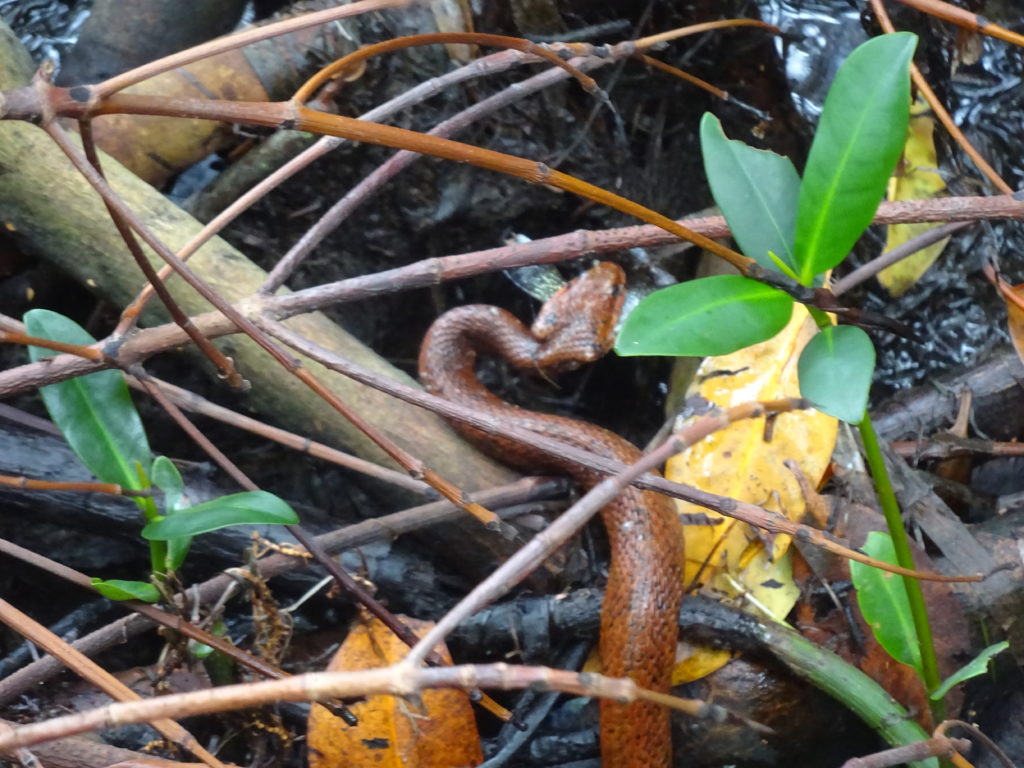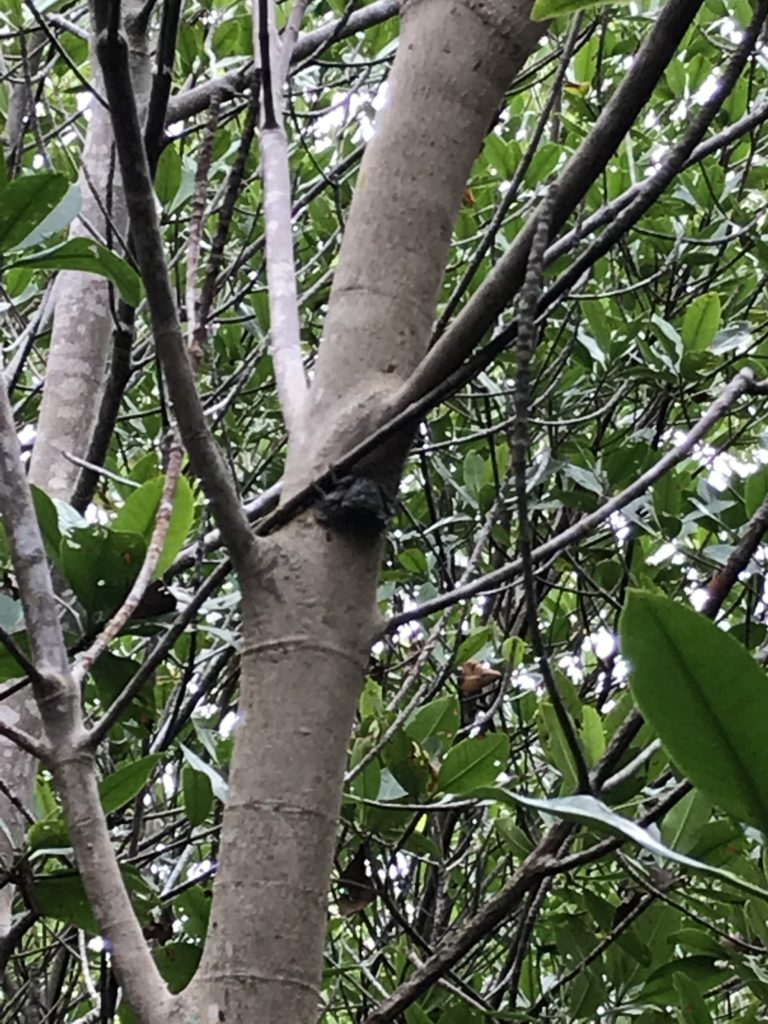Among the many amazing animals I saw on a recent visit to the Ding Darling National Wildlife Refuge on Sanibel Island (Fort Myers, Florida) was a beautifully red mangrove salt marsh snake. When I came across it, this one had grabbed a bewildered fish in its mouth and was working on turning it around to swallow.

After a few minutes the snake did just that, gulping it down live. The gathering crowd was both fascinated and a little grossed out, though there seemed to be an even split between those rooting for the fish and the snake.
What is even more fascinating about the mangrove salt marsh snake – its scientific name is Nerodia clarkii compressicauda – is that while it lives in the roots of red mangroves in an estuarine environment, it doesn’t have any particular adaptations to living in sea water. Most aquatic snakes live in freshwater. There are fully marine sea snakes, but they live entirely in the ocean and are adapted to the salt water; in particular they have large organs designed specifically to excrete salt, which allows sea snakes to drink seawater.
Mangrove salt marsh snakes have no such organ so cannot drink seawater. Instead they get most of their fresh water intake from their food (like the poor fish above) and by drinking freshwater from temporary puddles that form in the sand or pockets of roots after rainstorms. Calling them aquatic is a bit of a misnomer: perhaps semi-aquatic is more accurate. But they also can be considered semi-arboreal in the sense that they spend much of their time on the proproots of red mangroves (Rhizophora mangle, which a particular favorite of mine because I had studied many years ago in Bermuda). Indeed, the one I saw was slithering around the shallows and over the prop roots with the fish in its mouth looking for a good place to eat. These snakes aren’t great swimmers so they hang out in shallow pools as the tide retreats and snap up trapped fish.
Another fascinating aspect of mangrove marsh snakes is their coloring. The one I saw was brilliant red but they can also appear as rather grayish with darker splotches and bands. Even odder, any given litter of mangrove marsh snakes could contain a mix of both colors; live-bearers, a litter could have up to 22 individuals. The gray phase allows them to hide in the leaf litter of mangrove trees while the red phase provides great camouflage for snakes resting on mangrove branches and prop roots.
The red phase I saw now rested after gorging down its meal, so I moved on to check out the rest of the mangrove trail. Along the way I saw another unique denison of the mangroves – a mangrove tree crab, most likely Aratus pisonii – clinging to a tree about 15 feet above the ground.

I saw a lot more both in the mangrove trail and the rest of the Ding Darling National Wildlife Refuge, but this snake having lunch was one of the most fascinating, and quite a thrill to capture on video.
David J. Kent is an avid science traveler and the author of Lincoln: The Man Who Saved America, now available. His previous books include Tesla: The Wizard of Electricity and Edison: The Inventor of the Modern World (both Fall River Press). He has also written two e-books: Nikola Tesla: Renewable Energy Ahead of Its Time and Abraham Lincoln and Nikola Tesla: Connected by Fate.
Check out my Goodreads author page. While you’re at it, “Like” my Facebook author page for more updates!
Follow me by subscribing by email on the home page. Share with your friends using the buttons below.










